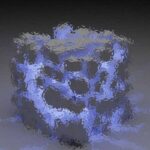It’s 1962. Cold War tensions bristle between Washington and Moscow. Forced to enlist by the United States military, a young physician reluctantly cuts short his medical residency at New York’s Bellevue Hospital and ships out to a remote corner of Greenland.
His orders? To serve as camp doctor at what he was told was a polar research station dug about 26.2 feet (8 meters) beneath the surface of Greenland’s ice sheet.
Uncle Sam “sent me to sit under the ice cap 800 miles (about 1,300 kilometers) from the North Pole,” recalled Dr. Robert Weiss, who was then 26 and is now the Donald Guthrie Professor of Urology at Yale University.
In fact, Camp Century, as Weiss’ icy home was known, formed part of a top-secret attempt by the US to hide launch sites for missiles in the Arctic, which the military viewed as a strategic location closer to Russia.
Weiss, who said he was unaware of the Pentagon’s ambitious plans until information was declassified in the mid-1990s, has vivid memories of two formative tours of duty at Camp Century in 1962 and 1963. He spent just short of a year there in total, living in a nuclear-powered city in the ice for months at a time.
While the camp’s Cold War importance was fleeting — the US military abandoned Camp Century in the late 1960s after less than a decade in operation — the cutting-edge scientific work conducted there, in fields such as geophysics and paleoclimatology, has had enduring impacts. And the research station’s story isn’t over yet.
Winter snowfall still outpaces summer melt at Camp Century, an experiment in its own right that now lies buried at least 98.4 feet (30 meters) below the surface. However, should that climate-driven dynamic flip, some potentially harmful remnants of the site could emerge, posing an environmental hazard that authorities haven’t grappled with, according to several studies conducted over the past decade.
Only a few firsthand accounts of living at Camp Century have been published. Weiss said he felt compelled to share his memories after friends passed along a blog post published in November that included stunning new imagery of the camp taken by NASA scientists as they conducted an aerial survey of Greenland’s ice sheet. Captured with the help of sophisticated radar mapping technology, the overhead view reveals the specter of structures submerged within the ice and a life only a few like Weiss could intimately describe.
A ‘city under the ice’
Building a “city under the ice,” as Camp Century has been called, was an unprecedented feat of engineering. Polar research stations today are typically built on top of the ice rather than hollowed out underneath.
Heavy-duty machines with rotating shovels burrowed into the snow, creating a network of some two dozen tunnels. Prefabricated buildings erected in the underground caverns housed sleeping quarters, latrines, laboratories, a mess hall, laundry and gym. A nuclear reactor, transported slowly for 138 miles (222 kilometers) across the ice sheet and installed beneath the surface, powered the base.







